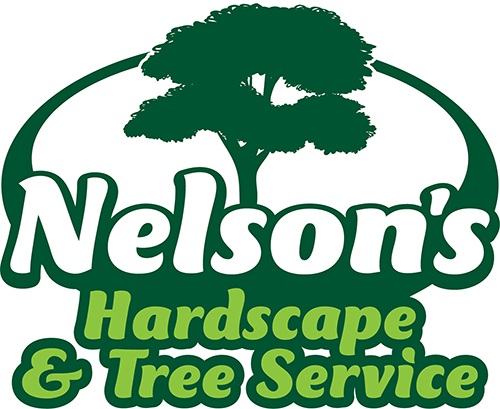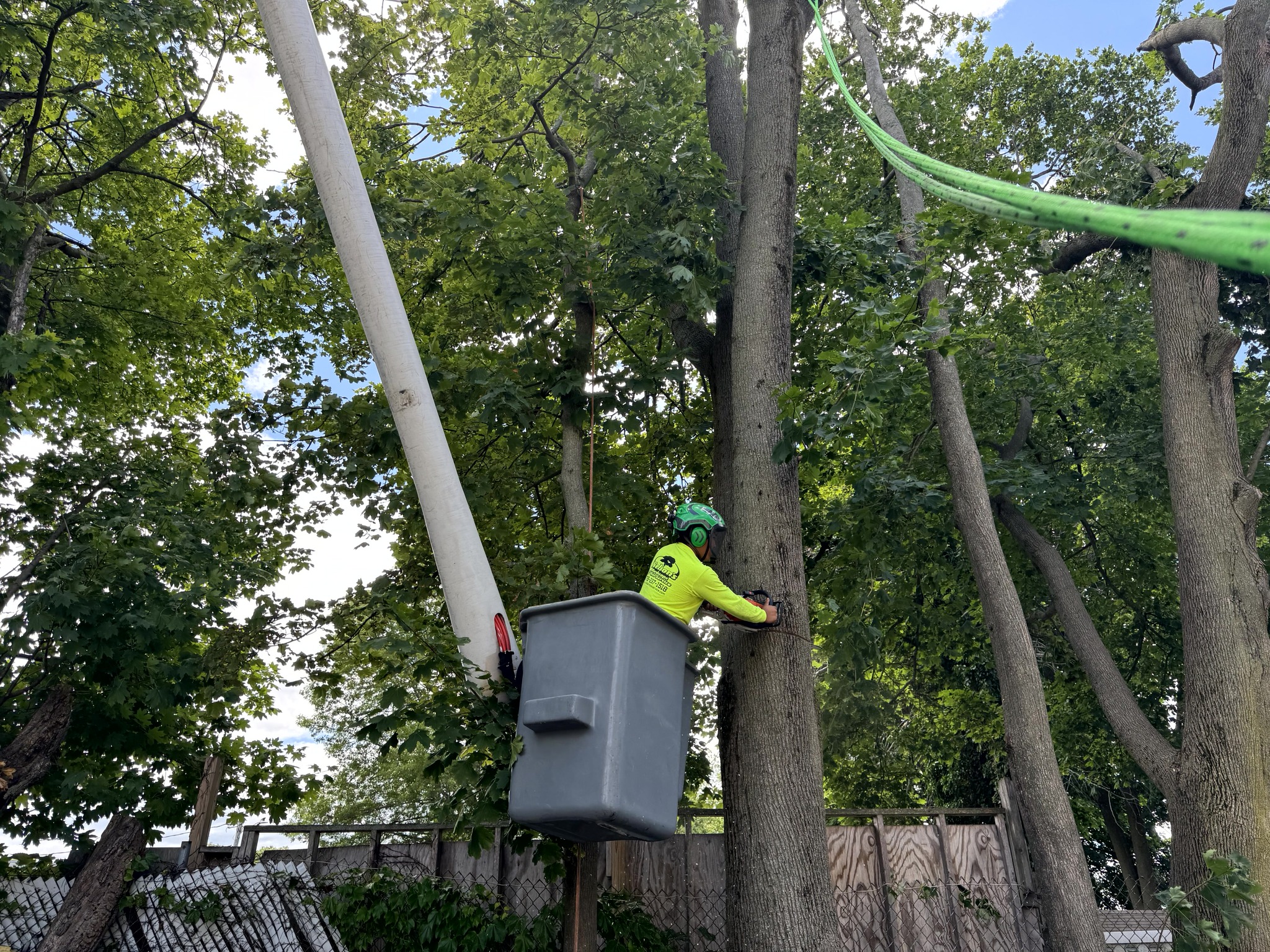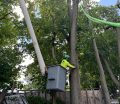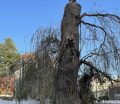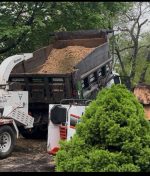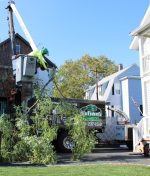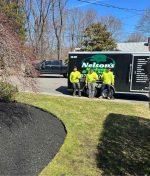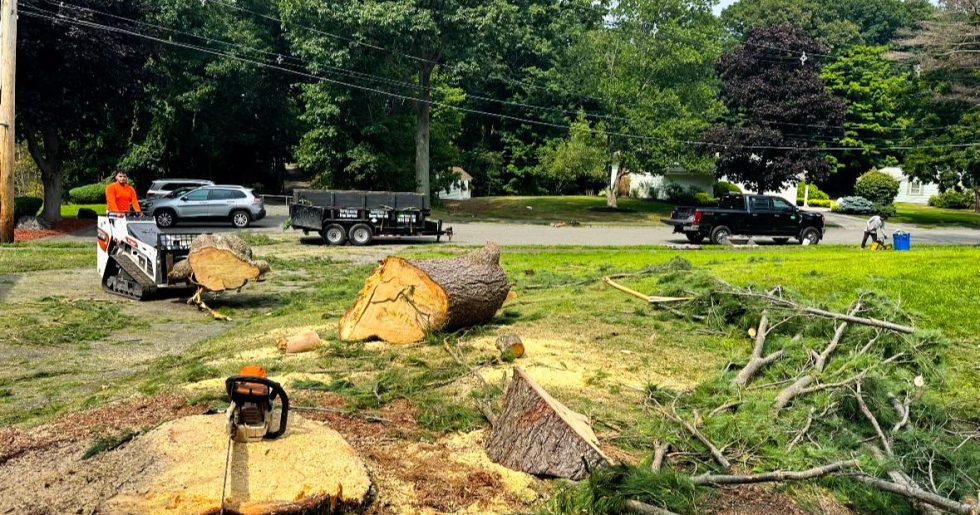
Trees are magnificent additions to any property, providing shade, beauty, and environmental benefits. However, when trees become hazardous, they pose serious threats to your home, family, and neighbors. Recognizing the warning signs that indicate you need emergency tree care can mean the difference between minor maintenance and catastrophic property damage.
Understanding these critical indicators helps property owners make informed decisions about when to seek immediate professional assistance. Nelson’s Hardscape & Tree Service, with years of expertise in emergency tree situations, has identified the most common warning signs that require immediate attention from certified arborists.
1. Severe Storm Damage and Broken Branches
After severe weather events, trees often sustain significant damage that creates immediate safety hazards. Large broken branches hanging precariously, partially uprooted trees, or trees leaning at dangerous angles all require emergency tree care.
Key indicators include:
- Branches larger than 2 inches in diameter hanging or cracked
- Split tree trunks or major limbs
- Trees tilted more than 15 degrees from vertical
- Exposed root systems after soil erosion
Storm-damaged trees can fall without warning, potentially causing severe injury or property damage. Even seemingly stable damaged trees can become unstable during subsequent weather events.
Professional storm clean-up services can safely assess and remove hazardous debris, preventing further damage to your property.
2. Signs of Disease or Decay
Diseased or decaying trees become structurally compromised and unpredictable. Recognizing the symptoms of tree disease early can help determine whether emergency intervention is necessary.
Disease warning signs:
- Fungal growth at the base or on the trunk
- Large areas of dead or missing bark
- Cankers (sunken dead areas on bark)
- Unusual leaf discoloration or premature leaf drop
- Soft, spongy wood when probed
Advanced decay weakens the tree’s structural integrity, making it prone to sudden failure. Some diseases spread rapidly, potentially affecting other trees on your property.
3. Structural Problems and Leaning Trees
Trees that develop structural issues pose immediate risks to people and property. These problems often develop gradually but can reach critical points where emergency tree care becomes essential.
Critical structural warning signs:
- Trees leaning more than 15 degrees
- Cracks in the main trunk
- Multiple trunks showing signs of splitting
- Root heaving (soil lifting around the base)
- V-shaped branch unions that show cracking
Structural problems often worsen during weather events. Tree cabling can sometimes provide temporary stabilization, but severely compromised trees typically require removal.
4. Root System Damage and Exposure
Root damage significantly compromises a tree’s stability and health. Construction activities, soil compaction, or severe weather can expose or damage critical root systems.
Root system red flags:
- Exposed major roots
- Root damage from construction or excavation
- Soil washout revealing root systems
- Signs of root rot (soft, discolored roots)
- Mushroom growth around the root zone
Damaged root systems cannot adequately support large trees, especially during high winds. Professional assessment can determine whether tree removal is necessary or if the tree can be saved through proper care.
Emergency Tree Care Professional Assessment
Emergency Tree Care Assessment Checklist
| Warning Sign | Urgency Level | Action Required |
|---|---|---|
| Hanging large branches | Immediate | Emergency removal |
| Tree leaning >15° | Immediate | Professional assessment |
| Fungal growth on trunk | High | Urgent evaluation |
| Root system exposure | High | Immediate inspection |
| Dead branches >2 inches | Medium | Schedule removal |
| Pest infestation signs | Medium | Treatment assessment |
5. Dead or Dying Branches and Limbs
Large dead branches create falling hazards that can cause serious injury or property damage. These “widow makers” often fall without warning, especially during windy conditions.
Dead branch warning signs:
- Branches without leaves during growing season
- Brittle, easily broken branches
- Bark falling off in large sections
- Branches that sound hollow when tapped
Regular tree pruning and tree trimming help prevent dead branch accumulation. However, when multiple large dead branches are present, emergency tree care may be necessary to ensure safety.
6. Power Line Contact and Electrical Hazards
Trees growing into or falling onto power lines create extreme safety hazards requiring immediate emergency tree care. Never attempt to remove trees near power lines yourself.
Electrical hazard indicators:
- Branches touching power lines
- Trees leaning toward electrical wires
- Storm damage causing tree-power line contact
- Burning smells or electrical arcing near trees
Contact with electrical lines can be fatal. Always call utility companies first, then professional tree services equipped to handle electrical hazard situations safely.
For situations involving tree debris and cleanup after electrical hazard resolution, professional wood chipping & disposal services ensure safe and complete cleanup.
When to Call for Emergency Tree Care
Don’t wait for a dangerous situation to become catastrophic. Contact emergency tree care professionals immediately if you notice any of these warning signs, especially after severe weather events.
Professional arborists have the expertise, equipment, and insurance necessary to safely handle dangerous tree situations. Attempting DIY tree removal on hazardous trees often results in injury or additional property damage.
Emergency tree care services typically provide 24/7 response for immediate hazards. Many also offer 4 tree stump removal methods to complete the cleanup process safely and efficiently.
Preventive Measures and Regular Maintenance
While emergency situations require immediate response, regular tree maintenance helps prevent many emergency scenarios. Professional tree assessment, proper pruning, and proactive care significantly reduce the likelihood of emergency tree situations.
Preventive maintenance includes:
- Annual tree health inspections
- Regular pruning and trimming
- Disease and pest monitoring
- Proper watering and fertilization
- Soil care and root protection
Investing in preventive care costs significantly less than emergency tree removal and property damage repair. Professional tree services can develop maintenance schedules tailored to your specific trees and property conditions.
Frequently Asked Questions
Q: How quickly should I respond to emergency tree warning signs?
A: Immediate hazards like hanging large branches or severely leaning trees require same-day professional response. Other warning signs should be assessed within 48-72 hours to prevent escalation.
Q: Can I determine if a tree needs emergency care myself?
A: While homeowners can identify obvious warning signs, professional arborists have the training and tools necessary for accurate assessment. When in doubt, consult a certified arborist immediately.
Q: What should I do while waiting for emergency tree service?
A: Keep people and pets away from hazardous trees. Avoid parking vehicles or placing outdoor furniture near dangerous trees. Document the situation with photos for insurance purposes if safe to do so.
Q: Does homeowner’s insurance cover emergency tree removal?
A: Coverage varies by policy and situation. Emergency tree removal due to storm damage is often covered, while removal for preventive reasons typically isn’t. Contact your insurance provider to understand your specific coverage.
Conclusion
Recognizing the six critical signs that indicate you need emergency tree care protects your family, property, and neighbors from serious harm. Storm damage, disease, structural problems, root issues, dead branches, and electrical hazards all require immediate professional attention.
Don’t risk your safety or property by delaying necessary tree care. Professional arborists have the expertise and equipment to handle dangerous tree situations safely and effectively.
Need Emergency Tree Care? We’re Here to Help!
Don’t wait until it’s too late. Our certified arborists provide 24/7 emergency tree services to keep your property safe.
Nelson’s Hardscape & Tree Service | 17 Bulfinch St, Lynn, MA 01904
